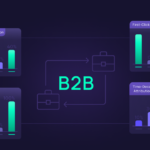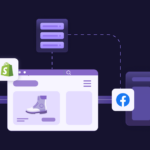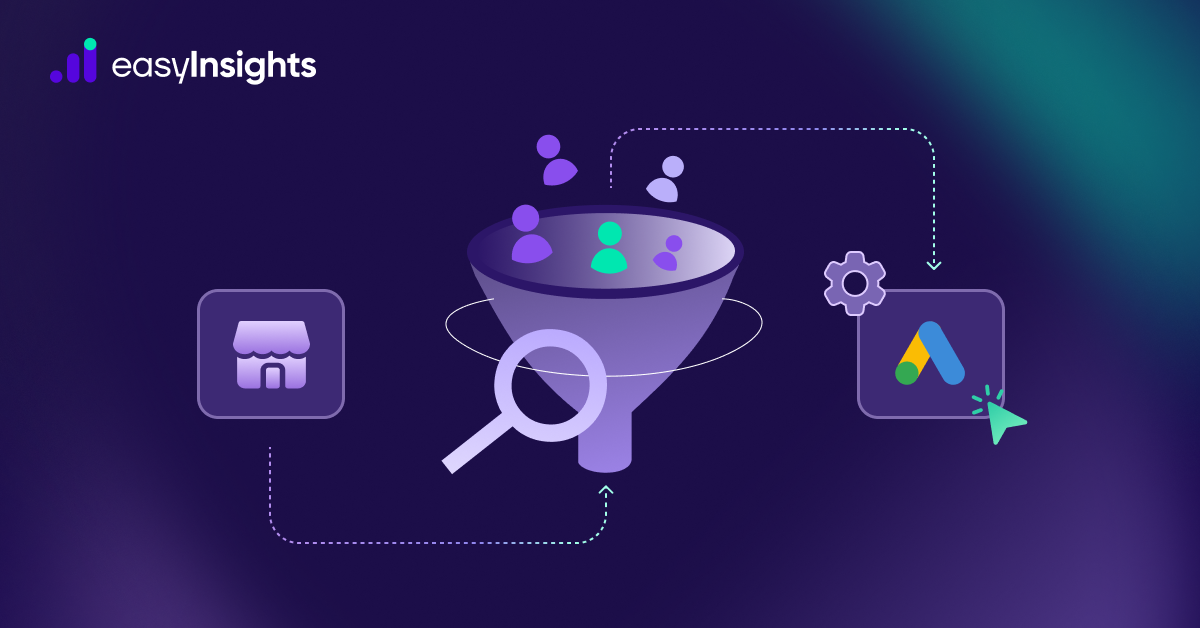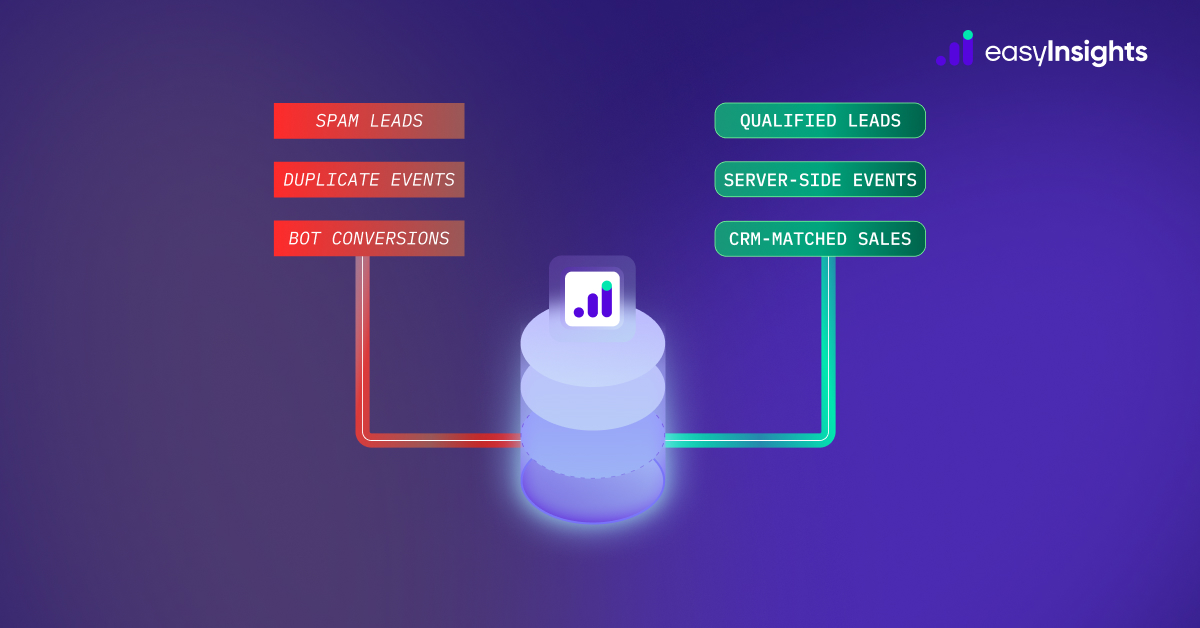
In digital marketing, understanding and leveraging data is crucial for success. Two powerful tools that marketers often use are Meta Pixel (formerly Facebook Pixel) and Google Analytics 4 (GA4). Both of these tools are designed to help businesses track user interactions and measure the effectiveness of their marketing efforts, but they come with different features and capabilities.
This article will explore the key differences between Meta Pixel and GA4, providing insights into their unique features and functionalities. By understanding how each tool works, marketers can make more informed decisions on which analytics platform best suits their needs.
Jump ahead to:
What is Meta Pixel ?
Meta Pixel (formerly known as Facebook Pixel) is a small piece of code that you add to your website to track user behavior and interactions after they click on your Facebook or Instagram ads. It helps advertisers measure conversions, optimize ad delivery, retarget website visitors, and build custom or lookalike audiences based on real-time website activity. The data collected by the Meta Pixel is crucial for improving the performance and ROI of Meta advertising campaigns.
Key Features of Facebook Pixel
Meta Pixel comes with several robust features that make it an indispensable tool for digital marketers:
- Conversion Tracking: Meta Pixel allows you to track user actions on your website after they have interacted with your Facebook ads. This includes actions like purchases, sign-ups, and form submissions.
- Audience Building: By tracking user behavior, Meta Pixel helps you create custom audiences for your Facebook ads, enabling more precise targeting.
- Ad Optimization: The data collected by Meta Pixel can be used to optimize your ads, ensuring they are shown to people who are more likely to take desired actions.
- Retargeting: Meta Pixel facilitates retargeting campaigns, allowing you to reach out to users who have previously visited your website but did not complete a desired action.
- Event Tracking: You can set up custom events to track specific actions on your website, providing detailed insights into user behavior.
By leveraging these features, Meta Pixel provides a comprehensive and detailed view of how users interact with your website, enabling you to optimize your ad campaigns, build targeted audiences, and drive more conversions.
Additional Reading: Facebook Conversions API ( CAPI ) – Comprehensive Guide for Performance Marketers
What is GA4?
GA4, or Google Analytics 4, is the latest version of Google’s web analytics platform that helps businesses measure and analyze user interactions across websites and apps. Unlike the older Universal Analytics, GA4 uses an event-based tracking model—which provides more flexible, detailed insights into the complete customer journey across devices and platforms.
Key Features of GA4
GA4 is packed with features that make it a robust tool for modern analytics needs:
- Event-Driven Data Model: Tracks user actions as events, providing detailed insights beyond sessions.
- Cross-Platform Tracking: Integrates website and app data for a holistic user journey view.
- Advanced Analysis Tools: Features like funnel analysis, path analysis, and segment overlap help you understand user flow better.
- Enhanced Machine Learning: Utilizes machine learning to provide predictive metrics and automated insights.
By leveraging these advanced features, GA4 provides a comprehensive and detailed view of user interactions, enabling you to optimize your digital strategy and improve user engagement across all platforms.
Additional Reading: How to Set Up Attribution Models in GA4: A Step-by-Step Guide
Meta Pixel vs. GA4 : A Detailed Comparison
When comparing Meta Pixel and GA4, several key differences and considerations emerge:
1. Scope of Tracking
Both tools are designed to track user interactions, but their focus and breadth differ significantly:
- Meta Pixel: Meta Pixel is primarily focused on tracking user interactions related to Facebook and Instagram ads. It excels in providing insights specific to these social platforms, helping businesses optimize their ad performance and target audiences more effectively within the Facebook ecosystem.
- GA4: GA4 offers a broader scope by tracking user interactions across websites and mobile apps. This tool delivers a more comprehensive view of the customer journey, enabling businesses to capture and analyze data from various digital touchpoints. GA4’s extensive tracking capabilities allow for a deeper understanding of user behavior beyond social media, encompassing all aspects of the digital experience.
2. Data Collection
The approach to data collection differs between the two tools:
- Meta Pixel: Meta Pixel collects data specifically to optimize Facebook ad campaigns, build targeted audiences, and retarget users. Its data collection is centered around interactions related to ad performance and user engagement on Facebook and Instagram platforms.
- GA4: GA4 collects data from a wide range of sources, including websites and mobile apps. This tool provides detailed insights into user behavior across different platforms and channels, enabling a holistic analysis of user interactions and engagement. GA4’s data collection is designed to support more comprehensive analytics and reporting.
3. Event Tracking
Event tracking capabilities vary in their complexity and flexibility:
- Meta Pixel: Meta Pixel allows for custom event tracking, but it is more limited in scope compared to GA4. It focuses on tracking specific actions related to ad interactions, such as clicks and conversions on Facebook and Instagram ads.
- GA4: GA4 offers advanced and flexible event tracking capabilities, enabling detailed measurement of user actions across various digital environments. Its event-driven data model allows for a more granular analysis of user interactions, providing deeper insights into user behavior and engagement.
4. Integration and Ecosystem
Integration with other platforms plays a significant role:
- Meta Pixel: Meta Pixel integrates seamlessly with Facebook’s advertising ecosystem, making it an essential tool for businesses heavily invested in Facebook and Instagram ads. It is optimized for ad management and performance within the Facebook ecosystem.
- GA4: GA4 integrates with the broader Google ecosystem, including Google Ads, providing a unified view of marketing efforts across multiple channels. This integration supports more comprehensive analytics and enables businesses to align their marketing strategies across different platforms.
Additional Reading: GA4 & the Google Marketing Platform – The Collaboration that Strengthens your Digital Marketing Strategy
5. Privacy and Compliance
Privacy and compliance considerations are important for both tools:
- Meta Pixel: Meta Pixel includes features designed to help businesses comply with data privacy regulations, but its focus is more on ad performance and audience targeting.
- GA4: GA4 places a stronger emphasis on privacy-centric design, with features that align with evolving data privacy regulations. It offers robust data controls and enhanced data deletion capabilities, supporting compliance with privacy standards across various regions.
Meta Pixel vs. GA4 : Data Inconsistencies due to Tracking
The methods used by each platform to track user interactions can cause data inconsistencies. Here’s how these differences affect data reporting:
- Cookies and JavaScript: GA4 relies on first-party cookies and JavaScript to capture data. If users block cookies or disable JavaScript, GA4 may miss tracking some interactions. Facebook, however, can track clicks without relying on cookies, as users are logged into their accounts, which can lead to discrepancies in the recorded data.
- Tracking Code Issues: Instances where the GA4 tracking code fails to load, such as when a user quickly closes the page after clicking an ad, can result in missing session data in GA4. Facebook, on the other hand, will still count the click, leading to inconsistencies between the two platforms.
Solving Data Disparity With EasyInsights
EasyInsights solves data disparity by giving you one unified view of all your marketing data—from Meta, GA4, Google Ads, and more.
- Unify Data from All Sources: Consolidate data from various platforms (web, app, social media – Meta, GA4, Google Ads, etc..) into a single, clear view.
- Standardized Metrics: Gain insights with consistent metrics across all channels, eliminating confusion and simplifying analysis.
- Effortless Reporting: Generate reports that provide a complete picture of your customer journey and marketing performance.
Conclusion
In the competitive digital marketing landscape, selecting the right analytics tools is crucial for making informed decisions and optimizing your strategies. Meta Pixel and Google Analytics 4 (GA4) offer valuable insights but serve distinct purposes. Meta Pixel excels at tracking interactions within Facebook and Instagram, helping you fine-tune your social media ad campaigns. On the other hand, GA4 provides a comprehensive view of user behavior across your website and mobile apps, allowing for a deeper understanding of interactions and overall performance.
To bridge the gap between these two powerful tools and ensure you are maximizing your marketing efforts, consider integrating EasyInsights. EasyInsights offers advanced solutions for aligning data from Meta Pixel and GA4, bridging the data parity observed in the platforms. With its advanced analytics capabilities, EasyInsights Pixel can help you seamlessly track and analyze data across platforms, making it easier to derive actionable insights and enhance your digital strategies.
Optimize your marketing efforts and get a clearer picture of your campaign effectiveness with EasyInsights. Start leveraging comprehensive analytics to drive your success today!
To know more Book a demo Today!









